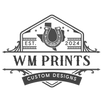3D printing has revolutionized the way we create and manufacture objects, providing immense flexibility and innovation. However, many users, especially beginners, often have a myriad of questions about the different materials used in this technology. In this blog post, we will address some of the most frequently asked questions about 3D printing materials to help you better understand their properties and applications.
What Are the Most Commonly Used 3D Printing Materials?
The most common 3D printing materials include PLA (Polylactic Acid), ABS (Acrylonitrile Butadiene Styrene), PETG (Polyethylene Terephthalate Glycol), and Nylon. Each material has its own set of advantages and is suitable for different types of projects. For instance:
- PLA: It's biodegradable, easy to print, and perfect for beginners. It's great for prototypes and decorative items.
- ABS: Known for its strength and toughness, it is commonly used for functional parts and mechanical applications.
- PETG: Offers a balance between PLA and ABS in terms of ease of printing and durability, widely used for producing consumer products.
- Nylon: A durable and flexible material, ideal for industrial applications and creating strong, functional parts.
How Do I Choose the Right Material for My Project?
Selecting the appropriate material depends on the requirements of your specific project. Consider the following factors:
- Strength and Durability: If your printed object needs to withstand stress, consider sturdy materials like ABS or nylon.
- Flexibility: For products that require a degree of bending, TPU (Thermoplastic Polyurethane) or flexible PLA would be suitable.
- Aesthetic Appeal: If the appearance of the object is a priority, PLA offers a smooth finish and is available in a variety of colors.
- Heat Resistance: For high-temperature environments, materials like ABS and polycarbonate are preferable.
Can 3D Printing Materials Be Recycled?
Yes, many 3D printing materials are recyclable, but it depends on the type of material and local recycling facilities. PLA, being a biodegradable thermoplastic, is often composted in industrial facilities. However, recycling varies geographically, so it's essential to check local options.
What Should I Know About Safety When Using 3D Printing Materials?
It's crucial to be aware of safety precautions when printing, especially with materials like ABS that can emit fumes. Ensure adequate ventilation in your workspace to prevent inhalation of any potentially harmful emissions. Additionally, handle all materials, whether in filament or resin form, with care to avoid direct skin contact or ingestion.
Additional Resources
For those looking to manage their 3D printing setups more efficiently, consider using accessories such as the Lyman Type prep tools holder. This product can help organize your workspace and keep essential tools readily accessible.
Explore more 3D printing products and accessories at WM Prints to enhance your 3D printing experiences.
Whether you're a novice or an experienced maker, understanding the properties and best uses for different 3D printing materials can significantly enhance the quality of your projects and the efficiency of your creative process. We hope this FAQ has been enlightening and supports you in selecting the right materials for your needs.





